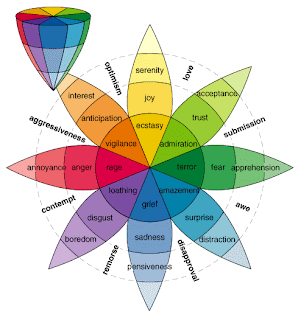
“And Jesus Wept” (Courtesy of A View From The Edge)
Over the past couple of weeks, Singapore’s General Elections captured the attention of many Singaporeans, resulting in a Polling Night that had a nail biting finish. More than 2 million people casted their votes for the future of Singapore.
In reading, viewing and listening to what my fellow Singaporeans have to say about the elections, it is clear that the emotions play a key role in its eventual outcome. There has been shouts of anger, tears of sadness, and smiles of happiness throughout the campaign period for all parties. Much of the rhetoric employed by the various candidates in their speeches tug heavily at the heartstrings.
On the personal front, I find that I’ve been increasingly afflicted by the emotional bug too. They range from the positives (love, hope, joy, peace) to the negatives (fear, disappointment, anxiety, sadness). While trying to understand the various dimensions of the heart and its manifestations, I came across an interesting chart from fractal.org which captures most of the dimensions of human emotion:

Courtesy of fractal.org
A deep-rooted part of everyone of us as social beings, emotions are a key in virtually every part of our lives. For sure, the head plays a big role in helping us to discern what’s right or wrong, which career path makes sense for us, or which home is more suitable for us based on affordability, location and size. However, when it comes to the crunch and a decision needs to be made at the cross-roads, it is the heart which takes over.
What does this mean for us in our work and our lives?
First, understand that you are a creature of feeling yourself and ask yourself the deep seated questions. What is your purpose and motivation for doing things in a certain manner? What are the emotional triggers that either set you off on a roller-coaster ride or raises you up to heights of delirious joy? Knowing thyself is a critical part of managing emotions both at home and the workplace.
Next, you should always consider both the logical thoughts and the illogical feelings of one’s stakeholders. While price, convenience, features, and service standards may be “must-haves” in any consumer offering, consider how you can make an emotional connection to one’s customers.
Do also think about how you can bring forth your own feelings and emotions when communicating to others, tampered of course for the occasion. When you’re at home speaking to your loved ones, use the five languages of love in a conscious manner. Speak not only with your mouth or with words, but also with your body.
Respect the feelings of others wherever you can, and understand that sometimes, winning the logical battle may result in one losing the emotional war. Consider what’s the best way to work with others while connecting with them both intellectually and emotionally.
Finally (especially for guys who may be less intuitive), do not hesitate to ask for help. In discerning matters of the heart, the fairer gender may be far more perceptive and accurate in their assessment. Seek the advice for those who have greater empathy for what others feel and use that to help you determine what you should do.
Naturally, there is a lot more about emotions and managing them both at work and at home. Renowned psychologist Daniel Goleman has written many good books on Emotional Intelligence that you can consider reading. However, what’s important is to do what works for you and to understand more closely how emotions work in every sphere of our lives.
